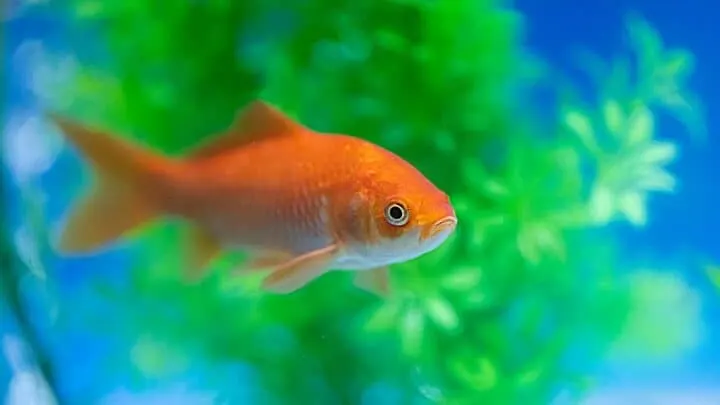Planted tanks aquariums that are as much about aquatic plants as they are about fish, make a beautiful addition to the home.
Aquascaping, or the art of creating unique underwater gardens by arranging driftwood, stones, and other organic matter amidst rooted and floating freshwater aquarium plants, is becoming an increasingly popular pastime amongst plant enthusiasts.
However, if you are planning to grow plants in the same environment as you are raising fish, you will need to take into account the compatibility of the plant varieties and fish species you choose.
Goldfish are some of the worst culprits when it comes to eating or destroying plant life.
However, there are a number of plants goldfish will happily live in harmony with, so you just need to make sure you choose the right variety of plant for your goldfish tank.
The five best aquarium plants for goldfish
1. Marimo Moss Ball
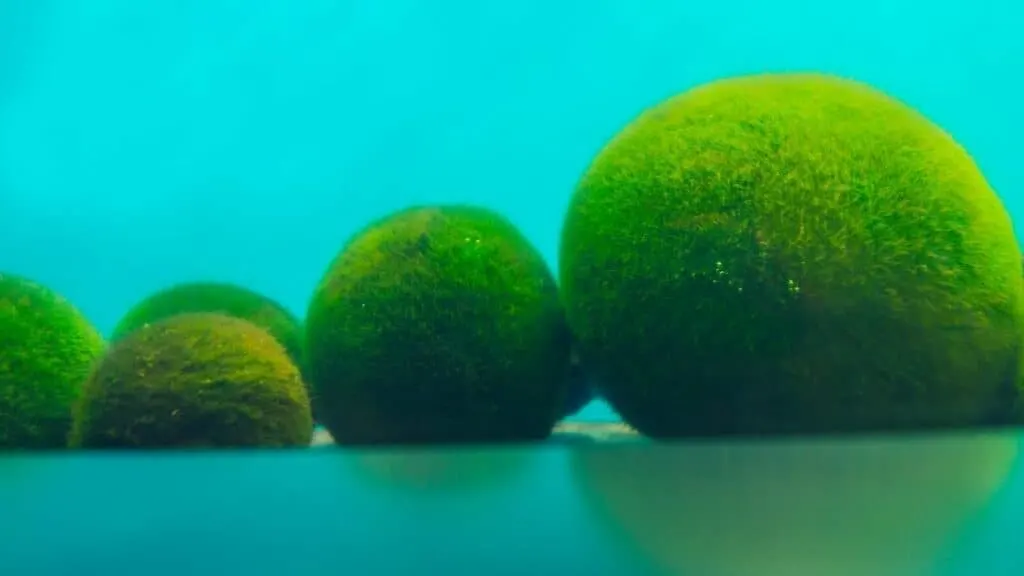
Marimo moss balls are a beautiful aquatic plant. Goldfish are not partial to eating them, but they do enjoy pushing them around the bottom of their tanks like toys!
Marimos resemble bright green moss but are actually an algal growth called Aegagropila linnaei.
They are native to freshwater lakes in several Nordic countries and get their unique spherical shape as the result of being moved along the lake floor by underwater currents.
Marimos can be grown on their own in glass containers, but also make a great addition to planted aquariums.
They are sensitive to the quality of water and require their water to be changed regularly. They also need indirect light and should be kept in cool water.
2. Java fern
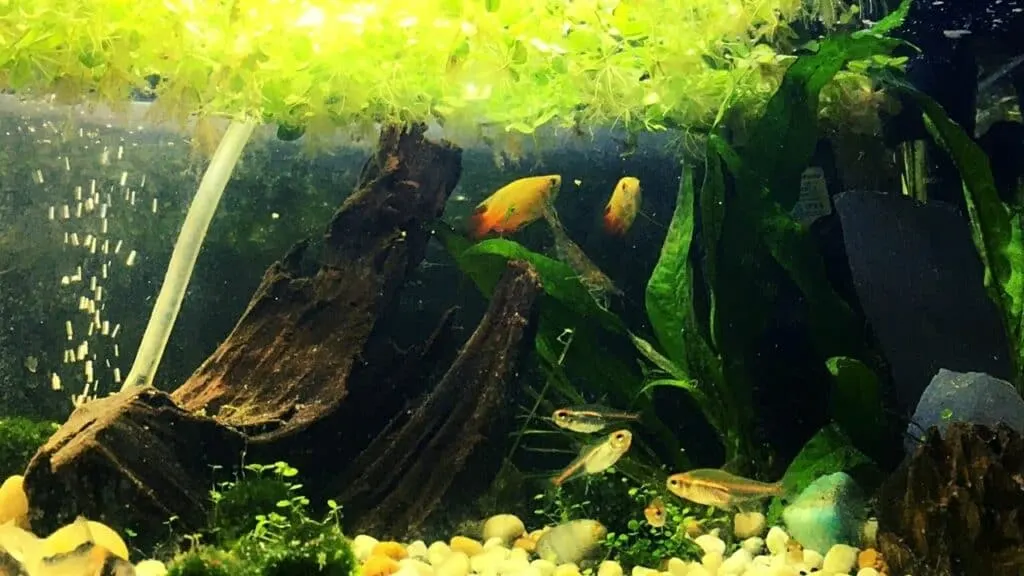
Goldfish cannot make much headway with Java ferns because of their fibrous leaves, which are too thick for them to bite through.
Their dense, leafy green growth also provides a fun environment for goldfish to swim around in. This is particularly true once Java ferns have grown to their full height of around 14 inches.
Java ferns are easy to care for and require only low to moderate light levels. They are flexible and can grow in virtually any substrate. They can also be affixed to driftwood or decorative stones.
Because of their prolific growth, you should trim your Java fern regularly to make it grow better and to keep it an appropriate size for your tank.
If your Java fern starts turning brown, investigate the reason for this and adjust your plant’s environment as needed to ensure it remains a healthy plant for your goldfish to play around in.
3. Hornwort
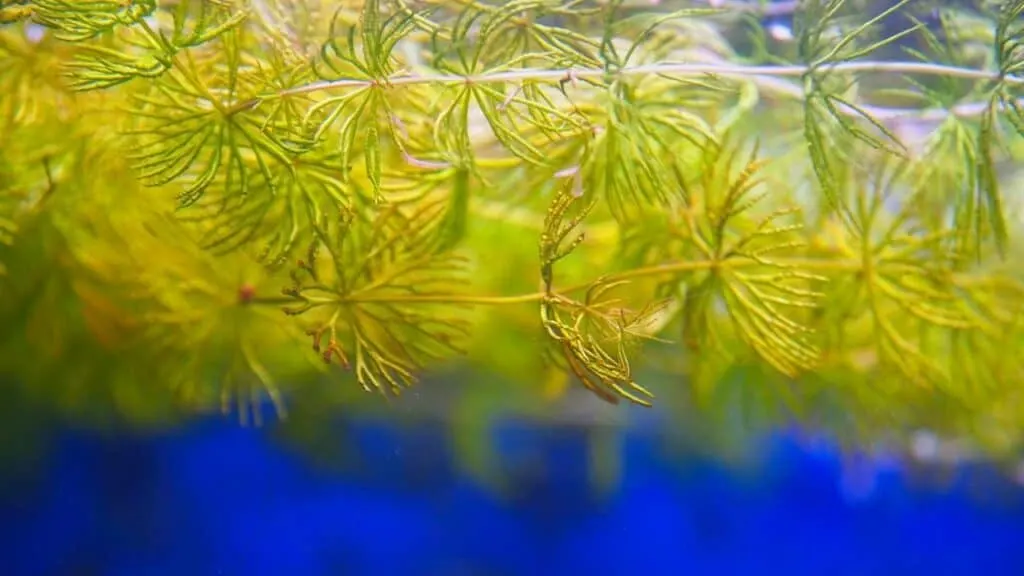
Hornwort is another plant that can be grown in a goldfish tank without becoming a snack.
Despite their dainty leaves, hornwort plants are left alone by goldfish, who do not like the taste of them.
Helpfully, hornwort is one of the easiest aquatic plants to grow and care for. It is flexible in terms of its water needs and is happy in temperatures anywhere between 59- and 86-degrees Fahrenheit.
It likes slightly acidic water and can grow either as a free-floating plant or when anchored in a substrate.
As long as hornwort gets enough light it will be happy. When grown as a free-floating plant, hornwort makes an excellent shelter for fish, and goldfish love to swim under it, as well as in and amongst its delicate stems.
If you want to encourage bushier growth in order to make a denser, more fun playground for your pets, you can trim hornwort stems down to half their length.
As they grow back, they will often split into two stems, which will give them a fuller body and hence create more pathways for adventurous goldfish to choose between.
Read up on how to trim aquarium plants to make sure you follow best practices and encourage healthy regrowth.
4. Bolbitis Fern
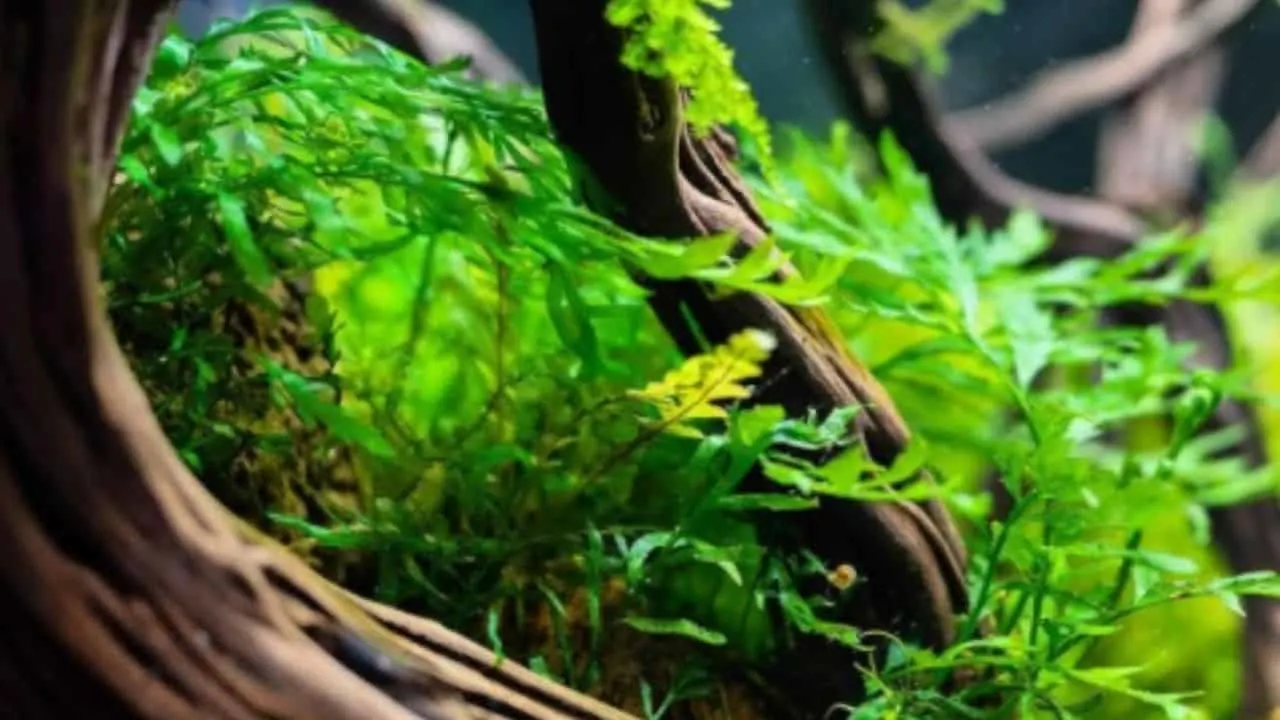
Photo Credit: @scaperslounge on Instagram!
The bolbitis fern is another gorgeous bushy plant that goldfish love swimming in and around. It too is a robust plant that has fibrous leaves too thick for goldfish to gnaw through.
Also known as African water fern, the bolbitis fern likes hard water that is fairly acidic. As an epiphyte, it does not like its rhizome to be covered and prefers to be attached to a piece of driftwood or a decorative stone. While it grows slowly, it can reach impressive heights of around 16 inches over time.
The bolbitis fern likes medium light and temperatures between 68- and 80-degrees Fahrenheit. Trim off any dying fern fronds to keep your bolbitis in prime condition.
Bolbitis ferns provide great shelter for goldfish, who in turn provide them with waste-based nutrients.
5. Amazon sword
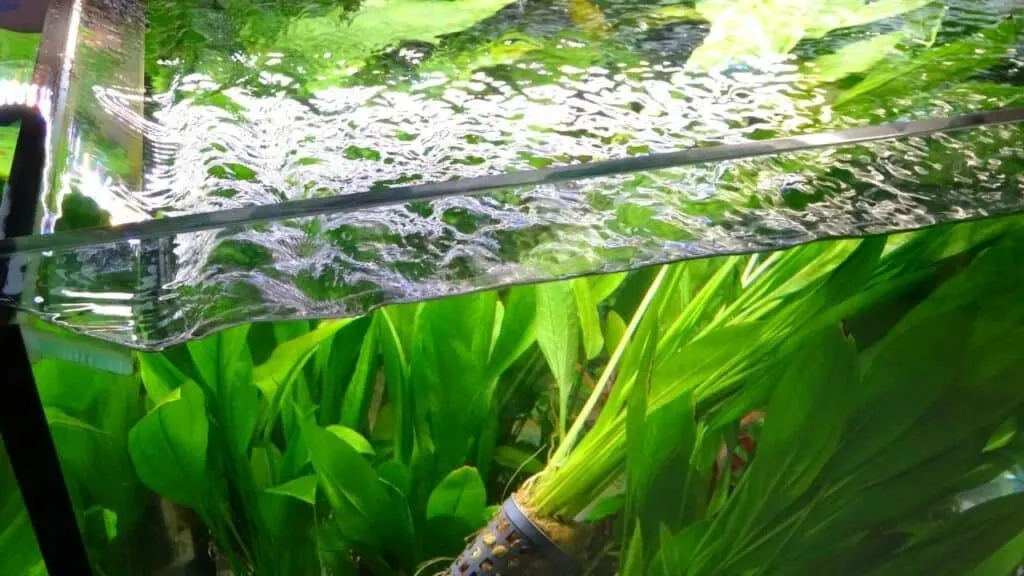
Amazon swords are another good plant to grow in a tank with goldfish, but you should only introduce them once they have reached a certain size, as goldfish are partial to nibbling on their tips.
While some aquarium owners have hesitations about this pairing for that reason, well-established, healthy plants have no problem offsetting any fish nibbles with fresh growth.
As long as you do not plant your amazon swords in a tank with goldfish while the plants are too young, they will do just fine.
To grow amazon swords in an aquarium you need to plant their roots deep into the tank’s substrate.
Take care when doing so that you dig down deep enough and plant their roots securely. Goldfish have been known to root around in the substrate at the bottom of tanks and dig up plants.
However, as long as your plants are big enough and you plant them securely enough, you should not encounter any major issues with growing amazon swords in a goldfish tank.
Goldfish love the forest-like landscape provided by the long, luscious leaves of amazon sword plants, and are often found sheltering amongst their thick leaves.
With regular pruning of their outer growth, amazon swords grow quickly.
Amazon swords like to get between 10 and 12 hours of moderate to strong light per day. For a clearer idea about what these light levels mean, read this essential guide to houseplant life levels.
Amazon swords like water pH levels to be between 6.5 and 7.5 and temperatures to be between 72- and 82-degrees Fahrenheit. For more information about adjusting the pH levels in water, read this brief guide to how to move pH levels up and down in hydroponics.

Daniel has been a plant enthusiast for over 20 years. He owns hundreds of houseplants and prepares for the chili growing seasons yearly with great anticipation. His favorite plants are plant species in the Araceae family, such as Monstera, Philodendron, and Anthurium. He also loves gardening and is growing hot peppers, tomatoes, and many more vegetables.

